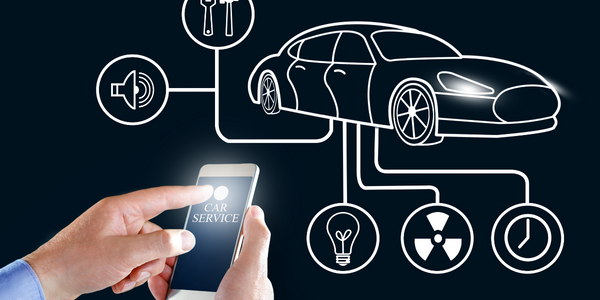公司规模
Large Corporate
地区
- Europe
国家
- Italy
产品
- Forcepoint Web Security
技术栈
- Firewall
实施规模
- Enterprise-wide Deployment
影响指标
- Productivity Improvements
- Cost Savings
技术
- 网络安全和隐私 - 网络安全
适用功能
- 商业运营
用例
- 网络安全
服务
- 系统集成
关于客户
奥斯塔山谷地区是一个特别法规区,人口接近 130,000 人。尽管它是意大利最小的地区,面积仅略大于 3,200 平方公里,但其政府雇用了约 2,500 名员工。该地区需要确保网络导航安全,同时保持员工的工作效率。社交网络的普及、电子商务的繁荣以及所有工作站同时可用的互联网访问,使得网络干预成为必要。因此,该地区将网络保护视为优先事项,以便根据内容和来源管理和规范网络访问。
挑战
奥斯塔山谷地区是意大利的一个特别立法区,人口接近 13 万,该地区面临着公共和私营公司面临的共同问题,尤其是像该地区这样的大型公司,即网络导航安全问题。该地区需要制定支持高级别安全性的政策,同时保持员工的工作效率。社交网络的普及、电子商务的繁荣以及所有工作站同时可用的互联网访问,使得网络干预成为必要。因此,该地区将网络保护视为优先事项,以便根据内容和来源管理和规范网络访问。该地区决定将现有防火墙与网络安全组件集成。
解决方案
对有效且灵活的解决方案的需求促使管理层选择了 Forcepoint Web Security。IT 部门、法律部门甚至最高管理层都支持这一变革。管理小组确定了所有员工的配置文件,并定义了允许开放或精确导航的站点类别。然后,每个区域的经理都可以请求特定配置文件的例外情况。该区域定义了适合所有员工的标准配置文件,然后建立了与特定工作职能相关的例外情况。
运营影响
数量效益

Case Study missing?
Start adding your own!
Register with your work email and create a new case study profile for your business.
相关案例.

Case Study
Enel Secures Italian Power Generation Network
Electric energy operators around the world are working to increase the reliability and cyber resiliency of their systems. This includes Enel, a global power company that manages and monitors the Italian power grid. This grid:• Serves 31 million customers• Has a net installed energy capacity exceeding 31 gigawatts• Includes more than 500 power generation plants,including hydroelectric, thermoelectric, and wind• Is managed and monitored by Enel 24/7/365• Is operated by Terna, the Italian Transmission System Operator (TSO)Enel is responsible for the availability of the grid’s underlying ICS and industrial network. It also manages Regional Control Centers and Interconnection Centers which connect with the TSO. The TSO manages the flow of energy to the grid plus controls and remotely regulates the power generation of power plants, increasing and decreasing power production as required. The complex system of interaction and cooperation between Enel and the TSO has strong security implications as well as operational and business challenges.

Case Study
Securing the Connected Car Ecosystem
In-vehicle communications and entertainment system hosts high-value or sensitive applications. API libraries facilitate communication and sharing of vehicle data. These API libraries are vulnerable to reverse engineering and tampering attacks and may even result in loss of passenger safety. Attackers can inject malware that may be able to migrate to other in-car networks such as the controller-area-network (CAN) bus which links to the vehicle’s critical systems. Software provided for dealers to interface with cars through the OBD2 port is vulnerable to reverse engineering and tampering attacks. Hackers may be able to abuse these tools to inject malicious code into the ECUs and CAN bus. Attackers can lift the cryptographic keys used, and use that to build their own rogue apps/software. Their cloned version of the original app/software may have altered functionality, and may intend to gain access to other in-car networks.

Case Study
Secure and Cloud-based Data Marketplace
The great promise of new connected concepts of industry like 'Industry 4.0' is their ability to deliver a historically unparalleled level of responsiveness and flexibility. While modern supply chains are already heavily integrated and designed to be fluid and fast moving, a large swathe of manufacturing still remains beholden to economies of scale, large production runs, and careful preplanning.The Industrial Internet of Things (IIoT) is set to change this by allowing small-batch or even custom manufacturing on a truly industrial scale. With machines whose functions are not set in stone, but flexible and determined by their operating software and with a new form of connectivity bringing industrial engineers, product manufacturers, and end users closer together than ever before. Ad-hoc adjustments to automotive parts, for example, during active product runs or the bespoke manufacturing of custom sneakers become very viable options indeed.Much of this remains a theoretical vision, but IUNO, the German national reference project for IT security in Industry 4.0 demonstrates the new capabilities in action with a secure technology data marketplace running a smart drinks mixer.

Case Study
Expedia Hosted by 2lemetry Through AWS
Expedia is committed to continuous innovation, technology, and platform improvements to create a great experience for its customers. The Expedia Worldwide Engineering (EWE) organization supports all websites under the Expedia brand. Expedia began using Amazon Web Services (AWS) in 2010 to launch Expedia Suggest Service (ESS), a typeahead suggestion service that helps customers enter travel, search, and location information correctly. According to the company’s metrics, an error page is the main reason for site abandonment. Expedia wanted global users to find what they were looking for quickly and without errors. At the time, Expedia operated all its services from data centers in Chandler, AZ. The engineering team realized that they had to run ESS in locations physically close to customers to enable a quick and responsive service with minimal network latency.
.png)
Case Study
OTA Software Updates for Smart Energy (gridX)
gridX has a requirement for over-the-air software updates for their gridBox devices and used the Yocto Project for their builds. The driver for the requirement was having the ability to quickly support new features, as well as deploying bug fixed and path known security vulnerabilities. New software updates with a US stick manually to all gridBox devices in the field would be prohibitively expensive and labor-intensive.

Case Study
Transformed IT Infrastructure Improves Business Agility
A global security, storage, and systems management software provider planned to demerge into two separate companies. To prepare, it undertook a major overhaul of its IT infrastructure and operations strategy. A key requirement: streamlining the Hosting Group, which handled compute, storage, and middleware operations. These functions had grown complex and had a wide geographic distribution. The company planned to bring them under closer in-house management.The company looked to increase its business agility so it could quickly and creatively respond to customer demands with improved internal collaboration and optimized go-to- market and IT service delivery capabilities. Modernizing IT functions, and making them more responsive, was critical to achieving these goals.



